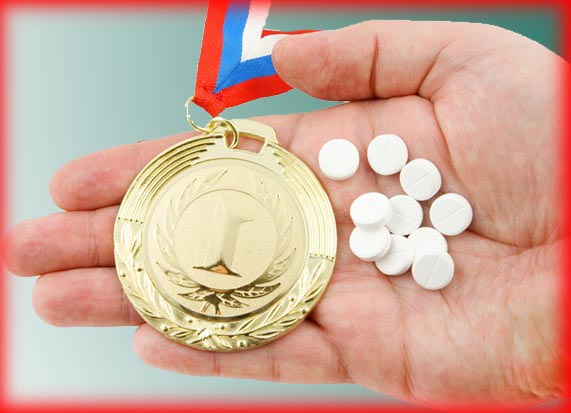When George Downey and other lacrosse players at Marywood University volunteered to take Viagra for a study, he received a snickering nickname from his high school coach. His parents jokingly told their friends. Inquiring minds sent messages to his Facebook page.
“They’re making fun of me,” Downey, 19, said good-naturedly. “Deep down, I think they’re looking for tips.”
Except that the Marywood study does not involve the bedroom, but the playing field. It is being financed by the World Anti-Doping Agency (Wada), which is investigating whether the diamond-shaped blue pills create an unfair competitive advantage by dilating an athlete’s blood vessels and unduly increasing oxygen-carrying capacity. If so, the agency could ban the drug.
Viagra, or sildenafil citrate, was devised to treat pulmonary hypertension, or high blood pressure in the arteries of the lungs. The drug works by suppressing an enzyme that controls blood flow, allowing the vessels to relax and widen. The same mechanism facilitates blood flow into the penis of impotent men. In the case of athletes, increased cardiac output and more efficient transport of oxygenated fuel to the muscles can enhance endurance.
“Basically, it allows you to compete with a sea level, or near sea level, aerobic capacity at altitude,” Kenneth W Rundell, director of the Human Performance Laboratory at Marywood, said of Viagra. Some experts are more sceptical. Anthony Butch, the director of the Olympic drug-testing lab at UCLA, said it would be “extremely difficult, if not impossible” to prove that Viagra provides a competitive edge, given that the differences in performance would be slight and that athletes would probably take it in combination with other drugs.
Scientists have the same uncertainty about the performance-enhancing effects of human growth hormone, though it is banned. But some athletes do not need proof — only a belief — that a drug works before using it, Butch said. “I think it’s going to be a problem,” he added.
At this point, there is no evidence of widespread use of Viagra by elite athletes, said Travis Tygart, chief executive of US anti-doping agency based in Colorado Springs, Colorado. Yet, because the drug is not prohibited and thus not screened with any routine urgency, there is no way to know precisely how popular it is.
Viagra gives a high on sports field too?
Scranton: Through the decades, athletes have tried everything from strychnine to bulls’ testicles to veterinary steroids in a desperate, and frequently illicit, effort to gain an edge. Several years ago, word spread that Viagra was being given to dogs at racetracks, said Travis Tygart, chief executive of US anti-doping agency based in Colorado Springs, Colorado.
Interest in the drug among anti-doping experts was further piqued by a study conducted at Stanford University and published in 2006 in ‘The Journal of Applied Physiology’. The study indicated that some participants taking Viagra had improved their performances by nearly 40 per cent in 10 km cycling time trials conducted at a simulated altitude of 12,700 feet — a height far above general elite athletic competitions. Viagra did not significantly enhance performances at sea level, where blood vessels are fully dilated in healthy athletes.
HOW DOES VIAGRA HELP ATHLETES
- Viagra, or sildenafil citrate, devised to treat pulmonary hypertension, or high blood pressure in arteries of the lungs, works by suppressing an enzyme that controls blood flow, allowing the vessels to relax and widen. The same mechanism facilitates blood flow into the penis of impotent men. In the case of athletes, increased cardiac output and more efficient transport of oxygenated fuel to the muscles can enhance endurance.
- Some athletes are believed to take Viagra in an attempt to aid the delivery of steroids to the muscles and hasten recovery from workouts. Others take Viagra to counter the effects of impotence brought on by steroid use
A 2004 German study of climbers at 17,200 feet at a Mount Everest base camp, published in ‘The Annals of Internal Medicine’, had found that Viagra relieved constriction of blood vessels in the lungs and increased maximum exercise capacity.
At this point, there is no evidence of widespread use of Viagra by elite athletes, Tygart said. Yet, because the drug is not prohibited and thus not screened with any routine urgency, there is no way to know precisely how popular it is.
There is some suspicion that Viagra may be used to circumvent doping controls in cycling, which has faced waves of scandal. Last May, cyclist Andrea Moletta was removed from the Tour of Italy after a search of his father’s car turned up 82 Viagra pills as well as syringes concealed in a tube of a toothpaste, according to news accounts. An investigation ended without formal accusations of doping.
Former major league baseball player Rafael Palmeiro once served as a pitchman for Viagra and tested positive in 2005 for the steroid stanozolol, though the connection, if any, between the drugs in his case is not known. Some athletes are believed to take Viagra in an attempt to aid the delivery of steroids to the muscles and hasten recovery from workouts. Others take Viagra to counter the effects of impotence brought on by steroid use, said Gary I Wadler, the chairman of the Wada’s committee on prohibited substances.
The agency, based in Montreal, is financing two studies related to Viagra and performance enhancement in sports. The University of Miami is studying whether Viagra benefits aerobic capacity at lower altitudes than the Stanford study — comparable to heights where elite competitions take place. This study is also examining whether there is a difference in the way Viagra affects male and female athletes.
The study at Marywood University is measuring the potential effects of Viagra as an antidote to air pollution, produced outdoors by the exhaust of factories and automobiles and indoors by ice-resurfacing machines. Studies involving animals, and children in Mexico City, have indicated that pollution causes pulmonary hypertension. “If that could be alleviated for athletes with Viagra, performance is going to be enhanced,” said Rundell, the lead researcher of the pollution study.
The Marywood study is expected to be completed by the end of the year, and the Miami study is expected to conclude in February. The earliest that the Wada could place Viagra on its list of prohibited substances is September 2009, five months before the 2010 Winter Olympics in Vancouver, British Columbia, a spokesman said.
“My guess is, it’s a pretty easy decision to make,” Rundell said. “It’s a compound that’s pretty easily measured. And it clearly provides an unfair advantage, at least at altitude. I couldn’t imagine it not going down on the list, but I’m not the one who makes those decisions.”
STAND OUT DISPLAYS: FROM DOGS TO ATHLETES
- Several years ago, word spread that Viagra was being given to dogs at racetracks, said Travis Tygart, the chief executive of the U S Anti-Doping Agency, based in Colorado Springs, Colo.
- A study conducted at Stanford University and published in 2006 indicated that some participants taking Viagra improved their performances by nearly 40 percent in 10-kilometer cycling time trials conducted at a simulated altitude of 12,700 feet—a height far above general elite athletic competition.
- A 2004 German study of climbers at 17,200 feet at a Mount Everest base camp found that Viagra relieved constriction of blood vessels in the lungs and increased maximum exercise capacity.
- There is suspicion that Viagra may be used to circumvent doping controls in cycling, which has faced waves of scandal. Last May, cyclist Andrea Moletta was removed from the Tour of Italy after a search of his father’s car turned up 82 Viagra pills, as well as syringes concealed in a tube of toothpaste, according to news accounts. An investigation ended without formal accusations of doping.




